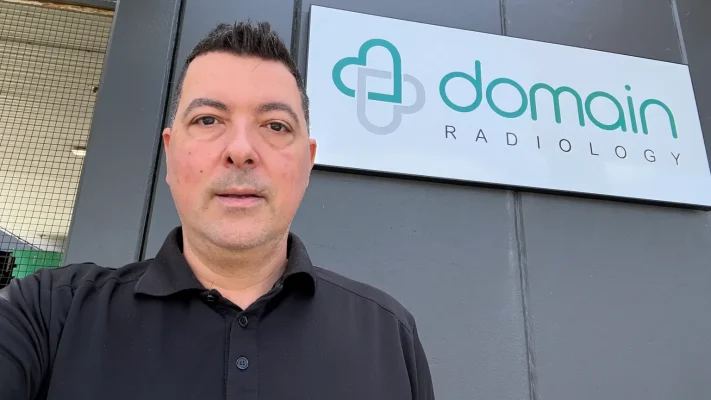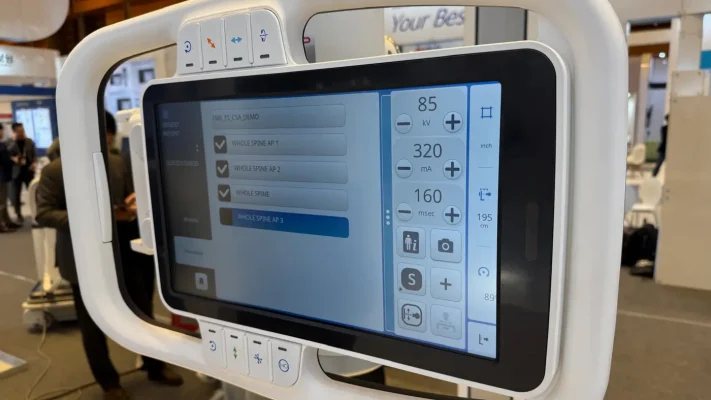Home » X-Ray Equipment Removal and Disposal. What is involved?
Removal, and disposal of an x-ray system mirrors the installation process but in reverse order.
However, the difference between x-ray equipment removal and disposal lies in their purposes. Removal is generally for relocating the system to a new location or temporarily storing it until it’s ready for its new home. Disposal involves following relevant legislative guidelines and requirements to discard the unit.
Any business that owns an x-ray machine should be keen to be across this process. Let’s work through the steps to remove and dispose of x-ray equipment.

Sam, Medic Cloud Managing Director
How to dismantle and remove x-ray equipment
In Australia, we are required to complete and submit paperwork to the relevant governing body in your state or territory. This process involves three steps:
Clinic site assessment
A site assessment of the clinic is crucial before x-ray equipment removal. The assessment allows us to:
- Safely disconnect the system’s electrical connections, especially for 3-phase systems.
- Determine the dismantling method based on the system’s age.
- Identify the tools needed for the specific type of equipment.
- Assess the building level from which the equipment will be collected.
- Plan entry and exit points to and from the room.
- Decide whether the equipment will be moved via stairs, a public lift, or a commercial lift.
- Consider street parking or loading dock access.
Thanks to modern technology, many of these assessments can be conducted through phone calls, emails, and photos provided by the clinic, hospital, or educational institute. This information helps us calculate the necessary steps for the process.
Dismantle x-ray equipment
After completing the site assessment, we will schedule the dismantling work and take appropriate measures to prepare. For instance, the site should be aware of potential temporary power outages and noise levels from power tools. The equipment’s weight will also influence the process. Dismantling a plain film x-ray system or a DEXA unit is much simpler than handling a ceiling-suspended system or a C or U Arm system. Each type requires specific tools and varying amounts of time. For example, a veterinary environment dismantle might take under two hours with one field engineer, while a ceiling-suspended unit in a hospital might take two full days with two or more engineers.
The final dismantling step is packaging the components for collection. If relocating or storing the equipment, we photograph and document the components to ensure proper reassembly. We also carefully package the components for safe transportation or storage. If disposing of the equipment, we break it down and clearly mark and separate high-risk items, such as the x-ray tube and high tension tanks, for safe handling and disposal.
Once dismantling is complete, we notify the relevant governing body about the equipment’s status. Even if relocating the equipment, the term commonly used is “Notification for the Disposal of a Radiation Source.”
Installing the x-ray machine in to the van

Installing the x-ray machine in to the new van
Collect and remove x-ray equipment
Once dismantled, the equipment is ready for collection. We engage a sensitive freight provider with the necessary equipment to move the system, managing the project from start to finish to ensure compliance with all requirements and safety standards. Occasionally, a Société Générale de Surveillance report (SGS) may be needed, especially for disposing of equipment containing toxins, typically found in pre-1980s models.
Some hospitals, government agencies, and educational institutions may require an SGS report due to internal policies. The cost of this report ranges from $1,500 to $3,500, depending on the equipment type, and it dictates the disposal method, especially if harmful toxins are present. This can add additional costs to the overall disposal process.
Speak to us today at Medic Cloud to discuss this process and your options. You can contact us at 1300 658 103.
Read more blogs

Subscribe to Medic Hub
Get the latest insights direct to your inbox.



